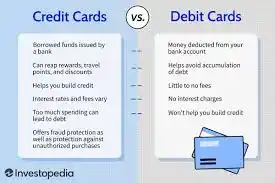A Comprehensive Guide to Loans: Types, Working Mechanism, and Tips to Obtain One

In today’s fast-paced world, loans have become an integral part of our financial landscape.
Whether you are planning to purchase a new car, buy a house, invest in higher education, or start a business, loans offer a way to fulfill your financial needs and aspirations.
However, many people still find the concept of loans confusing.
In this article, we will delve into the basics of loans, their working mechanism, various types, and essential tips for obtaining one.
What Is a Loan?
A loan is a financial transaction where a lender provides a certain amount of money or resources to a borrower, who agrees to repay the borrowed amount over time, usually with added interest.
The lender may be a financial institution like a bank, credit union, or an online lending platform, while the borrower can be an individual, a business, or even a government entity.
How Does a Loan Work?
The working mechanism of a loan involves several key components.
When a borrower approaches a lender seeking financial assistance, the lender evaluates the borrower’s creditworthiness and ability to repay the loan.
This evaluation includes assessing the borrower’s credit history, income, debt-to-income ratio, and other relevant factors.
Once approved, the loan amount is disbursed to the borrower, and a repayment plan is established.
The borrower is typically required to make regular payments, often on a monthly basis, until the entire loan, along with interest and any applicable fees, is repaid in full.
Failure to make timely payments can result in penalties and negatively impact the borrower’s credit score.
What Types of Loans Exist?
Loans come in various forms, each tailored to specific needs and circumstances. Some common types of loans include:
1. Personal Loans
These are unsecured loans provided based on the borrower’s creditworthiness and income. They can be used for various personal expenses, such as medical bills, home renovations, or debt consolidation.
2. Mortgage Loans
Mortgage loans are secured loans used to finance the purchase of a property. The property itself serves as collateral, allowing the lender to seize it if the borrower defaults on payments.
3. Auto Loans
Auto loans are used to finance the purchase of vehicles. Similar to mortgage loans, the vehicle acts as collateral in case of default.
4. Student Loans
Student loans are designed to cover educational expenses. They may have lower interest rates and flexible repayment options to accommodate students’ financial situations.
5. Business Loans
Business loans cater to entrepreneurs and companies seeking funding for various purposes, such as starting a business, expanding operations, or purchasing equipment.
6. Payday Loans
These short-term loans are typically for small amounts and intended to cover emergency expenses until the borrower’s next paycheck. However, they often come with high-interest rates and should be used with caution.
How Does One Get a Loan?
Getting a loan involves a step-by-step process:
1. Assess Your Needs: Determine the exact amount of money you need and the purpose of the loan.
2. Check Your Credit Score: Obtain a copy of your credit report and score to understand your creditworthiness. A higher credit score increases your chances of getting approved and securing favorable terms.
3. Research Lenders: Explore various lending institutions, including banks, credit unions, online lenders, and peer-to-peer lending platforms. Compare interest rates, fees, and repayment terms to find the best fit.
4. Gather Documentation: Prepare the necessary documents, such as identification, proof of income, bank statements, and any collateral documentation required.
5. Apply for the Loan: Submit your loan application to the chosen lender. Be honest and accurate in providing information.
6. Wait for Approval: The lender will review your application and assess your creditworthiness. Approval times can vary based on the type of loan and the lender’s policies.
7. Receive Funds: If approved, the lender will disburse the funds to your account, or in the case of secured loans, finalize the purchase (e.g., a car or property).
Tips for Getting a Loan
1. Improve Your Credit Score: A higher credit score can lead to better loan offers and lower interest rates. Make timely payments, reduce outstanding debts, and avoid opening unnecessary credit accounts.
2. Shop Around: Don’t settle for the first loan offer you receive. Compare multiple lenders to find the most favorable terms.
3. Understand the Terms: Read the loan agreement carefully and clarify any doubts with the lender before signing. Pay attention to interest rates, fees, repayment schedule, and penalties for late payments.
4. Borrow Responsibly: Only borrow what you can comfortably repay. Avoid taking multiple loans simultaneously to prevent overburdening yourself financially.
FAQs
How does a loan work?
A loan works by providing a borrower with a certain amount of money that they agree to repay over time, usually with added interest. The borrower is evaluated for creditworthiness, and if approved, the loan amount is disbursed, and the borrower makes regular payments until the loan is repaid in full.
What loan means?
A loan refers to a financial transaction where a lender provides funds or resources to a borrower, who agrees to repay the borrowed amount over time, often with interest and fees.
What types of loans do you get?
There are various types of loans, including personal loans, mortgage loans, auto loans, student loans, business loans, and payday loans, each catering to specific needs and circumstances.
How does one get a loan?
To get a loan, one must assess their financial needs, check their credit score, research lenders, gather necessary documentation, submit a loan application, wait for approval, and, upon approval, receive the funds or make the purchase.





